There are, indeed, some birds that eat yellow jackets. The Tanager is the best-known wasp-eater, going so far as to wait outside a nest to nab this insect as it takes air!
This is a brave act, and one much appreciated by those with yellow jackets around. Yellowjackets are aggressive and quick to sting, by nature.
Tanagers are impressive hunters to be able to nab them from the air. And of course, before eating a yellow jacket, a tanager will remove its stinger!
While these are the top bird for eating yellow jackets, there are other birds that also consider them a snack.
See below!
Table of Contents
How to Identify a Yellow Jacket
A yellow jacket can be distinguished from a bee by its hard and shiny outer shell. Its body is also longer and slimmer, and there’s no fuzz to be found.
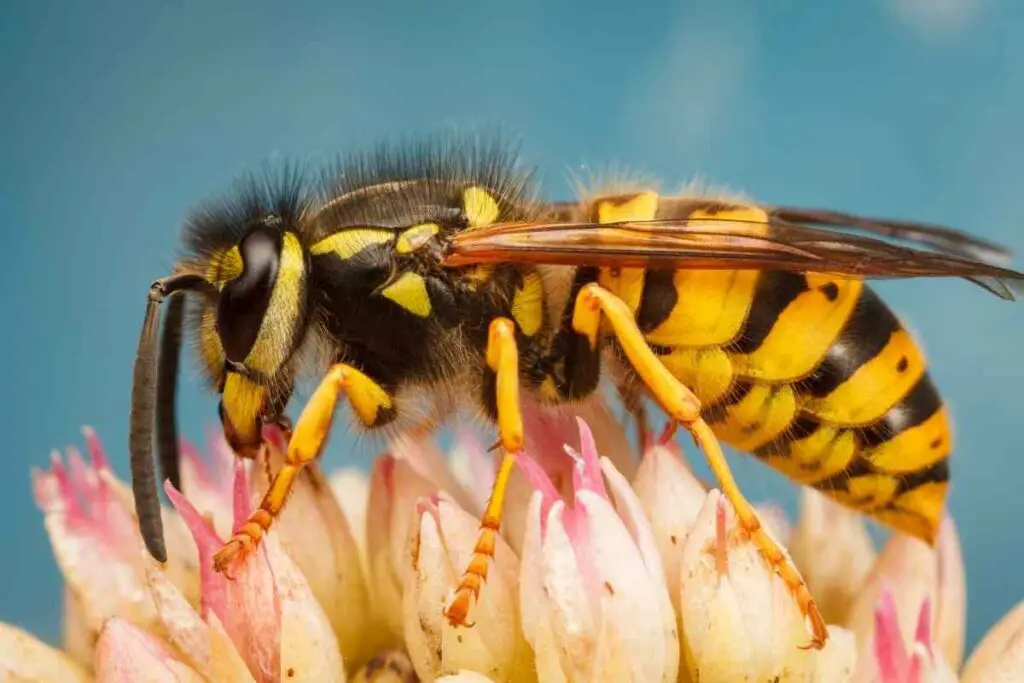
Yellowjackets can also fly quite fast and aggressively. If you see a bird clutching an insect such as this, you’ll know you’ve found a wasp-eater.
Do Birds Eat Yellow Jackets?
So, do birds eat yellow jackets? While the main wasp-eater is the Tanager -especially the Summer Tanager- there are several other birds brave enough to consider yellow jackets a snack.
These can help protect you around your house from nasty stings; some birds will even protect your bird feeder. Take a look!
The Tanager (Especially the Summer Tanager)
First and foremost among wasp-eaters are Tanagers, from the tanager family. Tanagers go out of their way to prey on yellow jackets specifically, even going so far as to tear open wasps nests (to get at the larvae).
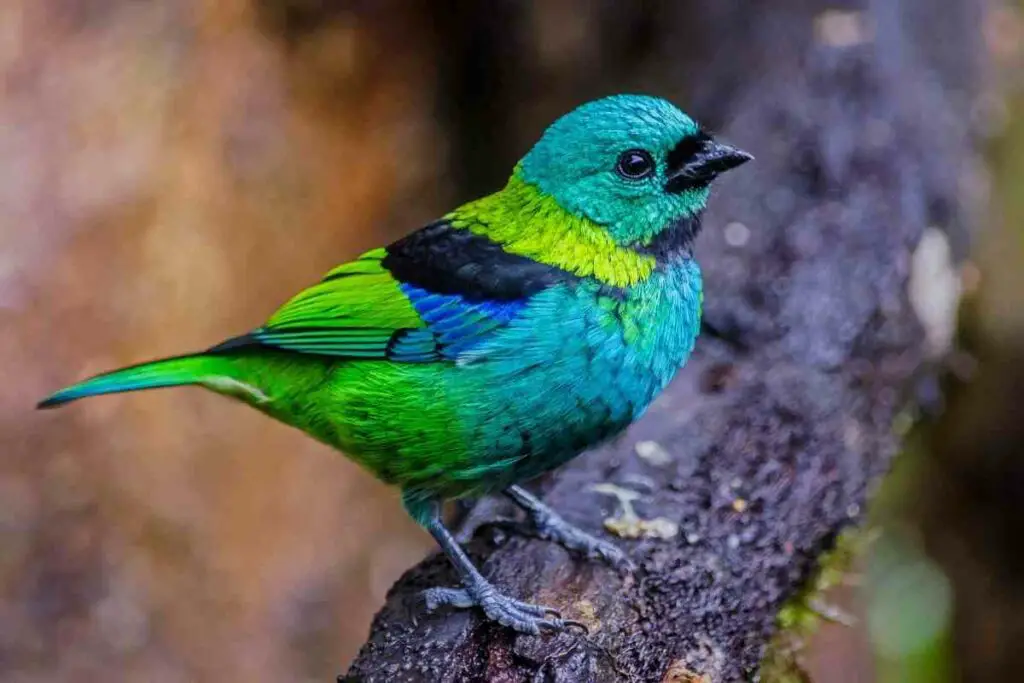
The most yellow jacket-eater is the Summer Tanager, which you could easily spot for its unique, all-over red (males) or all-over yellow (females) color!
So, how do they do it? Summer tanagers nab yellow jackets out of the air with impressive speed and skill. From here, they smack them into a branch, to stun them and remove the stinger in one blow!
The Summer Tanager is the top dog when it comes to hunting the yellow jacket.
If you want to draw tanagers to your home, you can always include some berries in your garden, as Tanagers tend to consider them a snack!
Gray Catbirds
Unlike the Tanager, Gray Cat Birds don’t hunt yellow jackets specifically. Rather, they eat a variety of insects, and this can include a yellow jacket here or there as a snack!
Gray Catbirds, as their name implies, are slate-gray-colored birds.
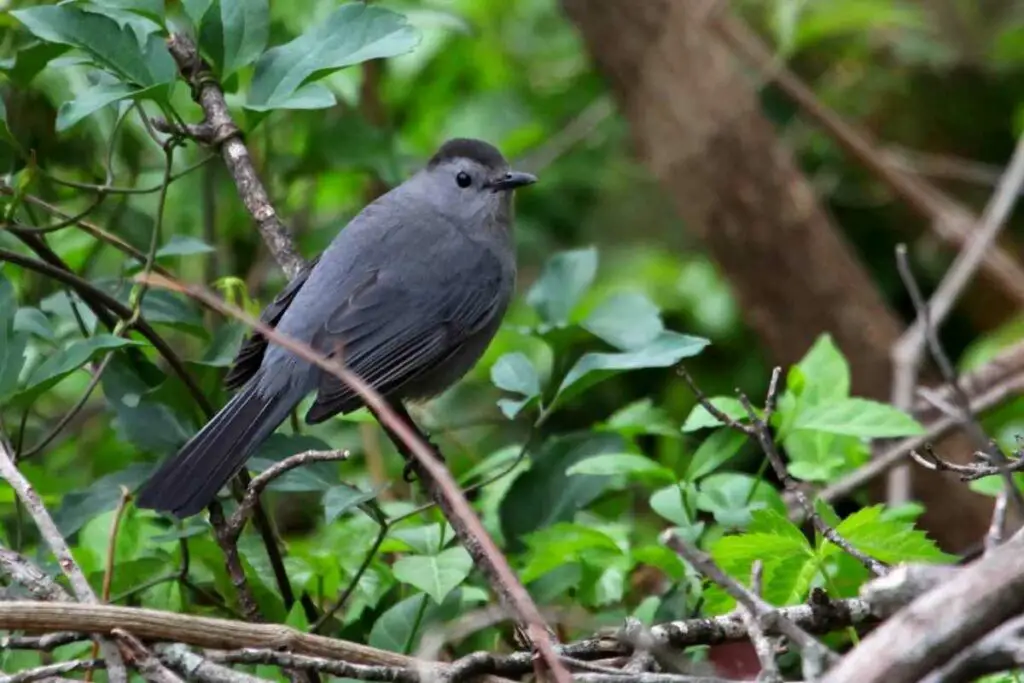
They’re medium-large-sized birds (think scrub-jay sized). The Gray Catbird is a renowned insect eater, and its diet includes grasshoppers, beetles, caterpillars, and moths, primarily.
As touched on above, a Gray Cat Bird may also consider a yellow jacket a snack.
To attract them, you can plant dogwood or winter berries, whose fruit they are known to favor!
Warblers
Warblers are some of the harder-to-attract birds, seeing as they don’t like to use bird feeders or birdhouses. They are also a known yellowjacket eater!

The biggest draw to folks is the bright yellow color of this small, round little bird, however. For the best chance at drawing warblers to your yard, you’ll want to choose plants that encourage insects.
The warbler is an insect-eater and not a seed-eater. It will happily go for moths, caterpillars, beetles, dragonflies, and yes, even yellow jackets.
You can probably see why they’re sought-after by many a homeowner!
The European Bee Eater
The European bee-eater is a beautiful little bird that people seem to love or hate. Hive owners have been known to illegally kill European Bee Eaters, unnecessarily.
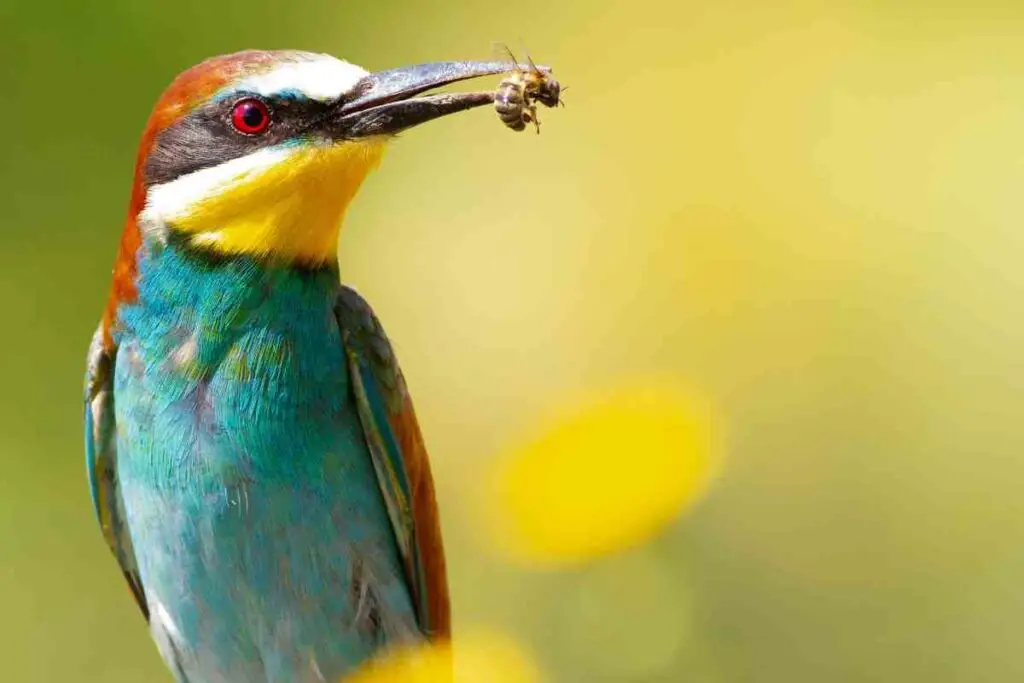
Unlike the Summer Tanager, who targets yellow jackets, European Bee-Eaters actually consume many kinds of bugs.
This includes ants, dragonflies, wasps, and locusts.
So, if you have an insect problem to address in your yard, a European Bee-Eater in your yard might just do the trick!
Just like the Summer Tanager, the European Bee-Eater will knock yellow jackets and wasps against a tree branch before eating them. This is to break the stinger off.
So, how can you encourage European Bee-Eaters to visit your yard?
All that you need are some plants that will attract insects; the European Bee-Eaters should follow!
Chipping Sparrow
Chipping sparrows are excellent little bug-hunters, grabbing beetles in particular. They will also go for dragonflies, locusts, and a variety of bugs.
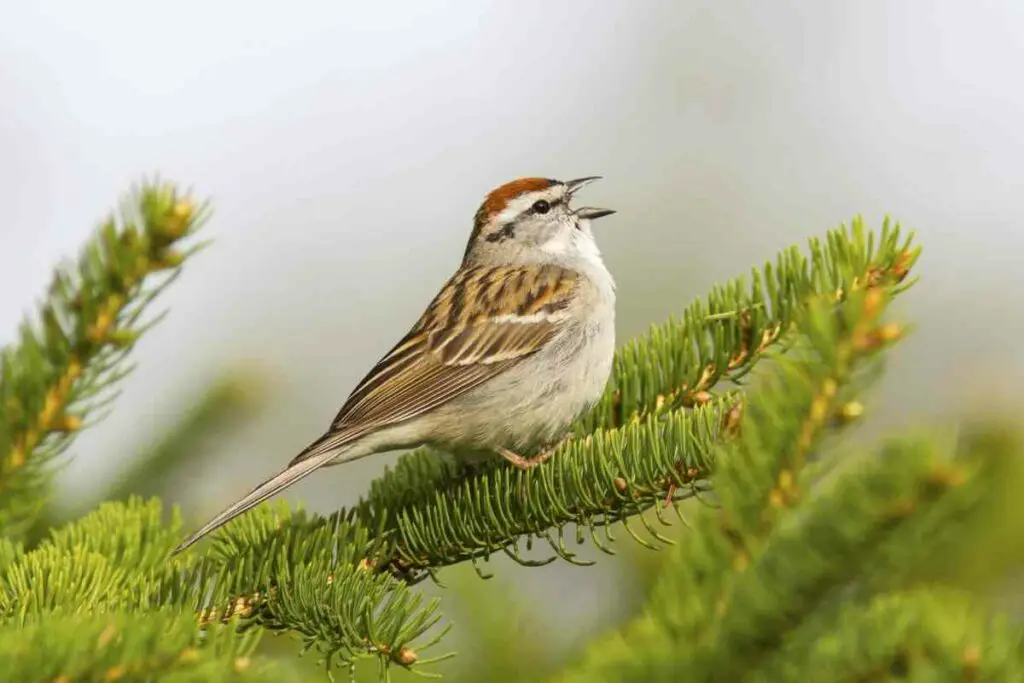
The chipping sparrow is also one of the birds brave enough to go for yellow jackets and wasps. They will still hunt them occasionally, however!
This being said, they will also avoid being close to yellow jacket nests, unlike the Summer Tanager (who, as covered above, seeks yellow jacket nests out).
To encourage chipping sparrows to visit your yard, all you need are the right seeds and a few types of grass. Specifically, chipping sparrows love red and yellow millet.
They will eat them from freshly-grown grass and from a bird feeder!
The Cedar Waxwing
Another occasional sampler of yellow jackets is the cedar waxwings.
This sometimes-insect eater has been known to tackle yellow jackets before, along with stoneflies, dragonflies, etc.

They typically prefer fruit and less threatening prey, however! Particularly, they favor dogwood fruit, mulberries, raspberries, and serviceberries.
So, if you want to attract them to your yard, you’ll want to plant berries plentifully. This should do the trick!
Do Birds Help Keep Wasps Away?
Many birds avoid wasps and yellow jackets, but as you can see (above), there are also those that hunt wasps and yellow jackets specifically.
They will not only grab wasps out of the air but some have even been known to break open yellow jacket nests to get at the larvae. As you can probably imagine, these birds are quite popular!
How Do You Get Rid of Yellow Jackets at Your Feeder?
- Buy feeders without any yellow. Unsurprisingly, yellow jackets are attracted to the color yellow. You can help avoid accidentally attracting them by investing in a feeder that doesn’t include any yellow on it. A little internet search should do the trick!
- Put something sticky or slippery on the feeding port. Since yellow jackets have to land to feed on most hummingbird feeders, you can outwit them with something sticky or slippery. This will make it hard for them to land and to feed, which can ultimately drive them off (at least, it should decrease their numbers).
- Try some wasp traps. Wasp traps will surround each feeding port, blocking out yellow jackets while allowing hummingbirds access. This is a great way to yellow-jacket proof a birdfeeder!
- Get a hummingbird feeder that has bee guards. Some feeders already come with bee guards. You can search for these specifically, and save yourself the hassle of adding them on later!
- Try mealworms in an oriole feeder. If wasps are a serious problem at your oriole bird feeder, you can always try mealworms instead. Yellowjackets are all about sweet nectar, so this should cause them to lose interest, ideally. There are also plenty of birds that like mealworms just as much as nectar!
How Do Birds Eat Yellow Jackets Without Getting Stung?
So, how do these skillful birds eat yellow jackets and wasps without getting stung? By breaking it off on a branch. This way, they can consume them ‘safely’ (it still takes a healthy dose of bravery).
It’s a clever, practical little trick!
Final Thoughts
So, that’s a pretty impressive list in answer to ‘do birds eat yellow jackets?’ Not only is there one bird, but there are several birds that are willing to eat yellowjackets.
These are definitely birds you’ll want to have around, right? Fortunately, all that you need to do to attract most of them is plant berries and fruit, as well as plants that attract insects.
This should do the trick!




